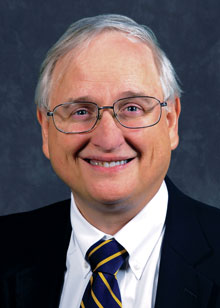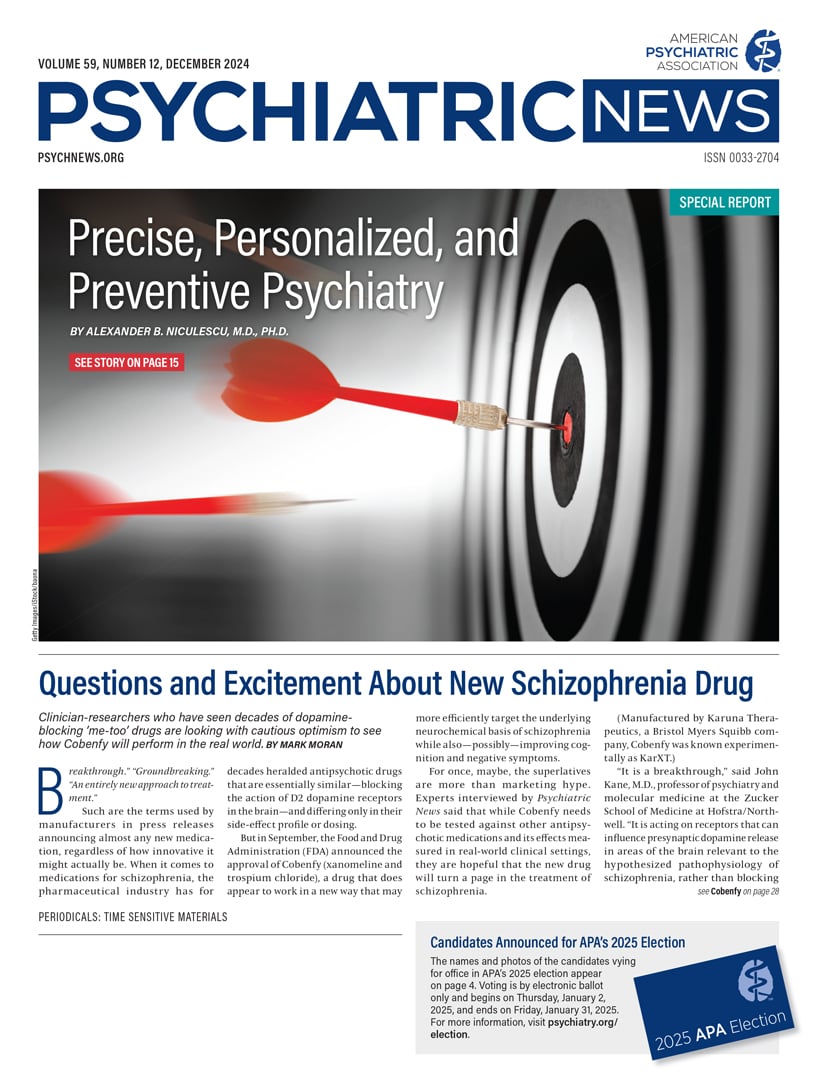One of the challenges of treating stimulant use disorder is that there are currently no medications approved by the Food and Drug Administration specifically for that purpose. However, psychiatrists still have plenty of options for their patients with stimulant use disorder, including prescribing several medications off-label and offering behavioral therapies such as contingency management, said experts who spoke on a panel at APA’s Mental Health Services Conference.
“We looked at all the literature in this particular area [treating stimulant use disorders] to see if there was an adequate number of randomized controlled trials done with these medications and if the size of the studies would enable us to make really strong recommendations,” Liberto said. “At the end of the day, we found that there was insufficient evidence to recommend for or against the use of any pharmacotherapy for the treatment of cocaine use disorder or amphetamine/methamphetamine use disorder.”
In addition, the guideline states that psychostimulant medications should only be prescribed to treat stimulant use disorder by physician specialists who are board-certified in addiction medicine or addiction psychiatry and physicians with commensurate training, competencies, and capacity for close patient monitoring.
“I think off-label use is reasonable when patients don’t respond to behavioral therapies, [for] patients who don’t want to engage in behavioral therapy, or when patients live in a rural area where behavioral therapy is not readily available,” Liberto said.
He added that medications can be particularly helpful when the patient has a comorbid psychiatric condition. “If you’re treating alcohol use disorder, the patient may benefit from topiramate, anyway.”
The Power of Behavioral Therapies
Both clinical guidelines that Liberto cited emphasize behavioral treatments such as cognitive behavioral therapy (CBT) and contingency management—two topics discussed by Dominick DePhilippis, Ph.D., the deputy national mental health director for substance use disorders at the VA Office of Mental Health and Suicide Prevention.
“The challenge with CBT is that these skills take time to practice and develop. We’re still presented with the challenge of how we make recovery behaviors like abstinence appealing so there is motivation for the patient today,” DePhilippis said. “That’s where contingency management comes in, because it leverages immediate reinforcement for engaging in recovery-supportive behaviors.”
Referring to the philosophy of American psychologist B.F. Skinner, Ph.D., for whom the method of positive reinforcement was more important than the amount, DePhilippis outlined the steps involved in contingency management:
•
Selecting a specific, objective target behavior, such as abstinence
•
Measuring the target behavior objectively and frequently (i.e., drug screens)
•
Providing immediate, tangible, desirable reinforcement when the target behavior occurs
•
Escalating the size of the reinforcement for consistent behavior
•
Withholding reinforcement when the target behavior does not occur
•
Resetting the size of the reinforcement for the next occurrence of the target behavior
Contingency Management Works
DePhilippis addressed common criticisms of contingency management, including that it involves paying a patient for doing what the patient should be doing anyway.
“This largely falls under the category of moral hazard, where some see it as bribing patients to recover, but contingency management doesn’t meet the definition of bribery, let alone serve as an example of it,” DePhilippis said.
“A bribe is providing a financial or material incentive to induce the recipient to behave in a manner that’s unethical or illegal that benefits the person who pays them,” he added. “In contingency management the reinforcer [reward] is to strengthen a behavior that’s in the patient’s own best interest.”
He added that because contingency management can treat the potentially fatal illness of stimulant use disorder, withholding it can be considered unethical and immoral.
Another criticism lobbed at contingency management is that it can diminish internal motivation for recovery—a criticism that DePhilippis said is not supported by research. “The overwhelming majority of evidence on the effect of external reinforcement of behaviors like recovery from substance use disorders has found that it does not reduce internal motivation,” he said.
A recent example is a meta-analysis published in the Journal of Consulting and Clinical Psychology in 2021 that included 23 randomized trials of contingency management on substance use outcomes. The meta-analysis found that individuals who received contingency management had a 22% greater likelihood of abstinence at a median of 24 weeks after treatment, and that the effects of contingency management on abstinence were evident as long as one year after reinforcers were discontinued.
“Contingency management is among the most effective treatments for promoting longer periods of abstinence,” DePhilippis said. “We know [in general] that the longer the duration of abstinence during treatment, the greater the likelihood of long-term abstinence following treatment. ■


